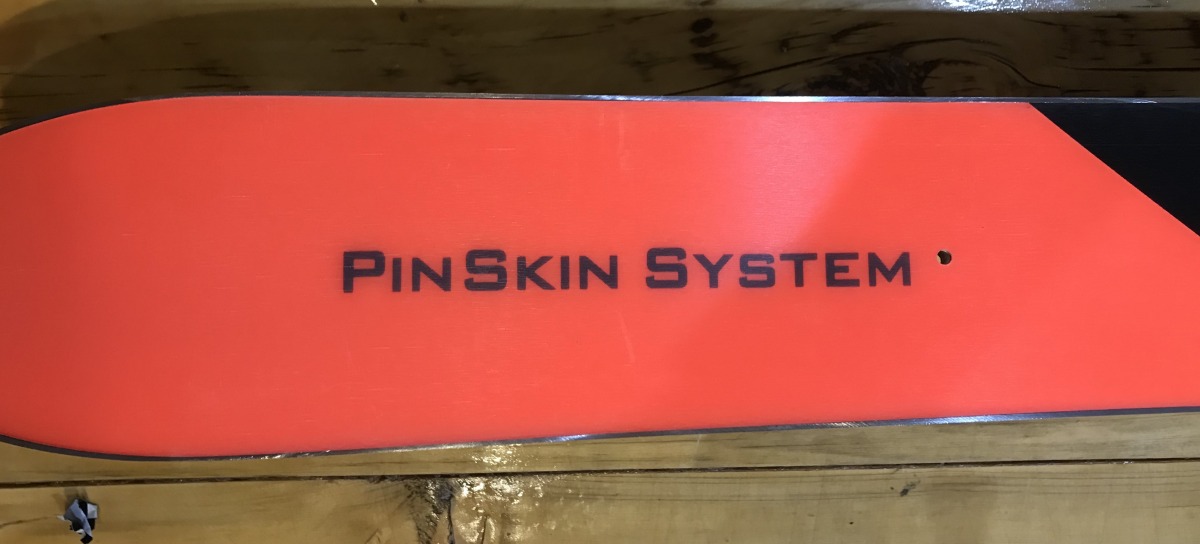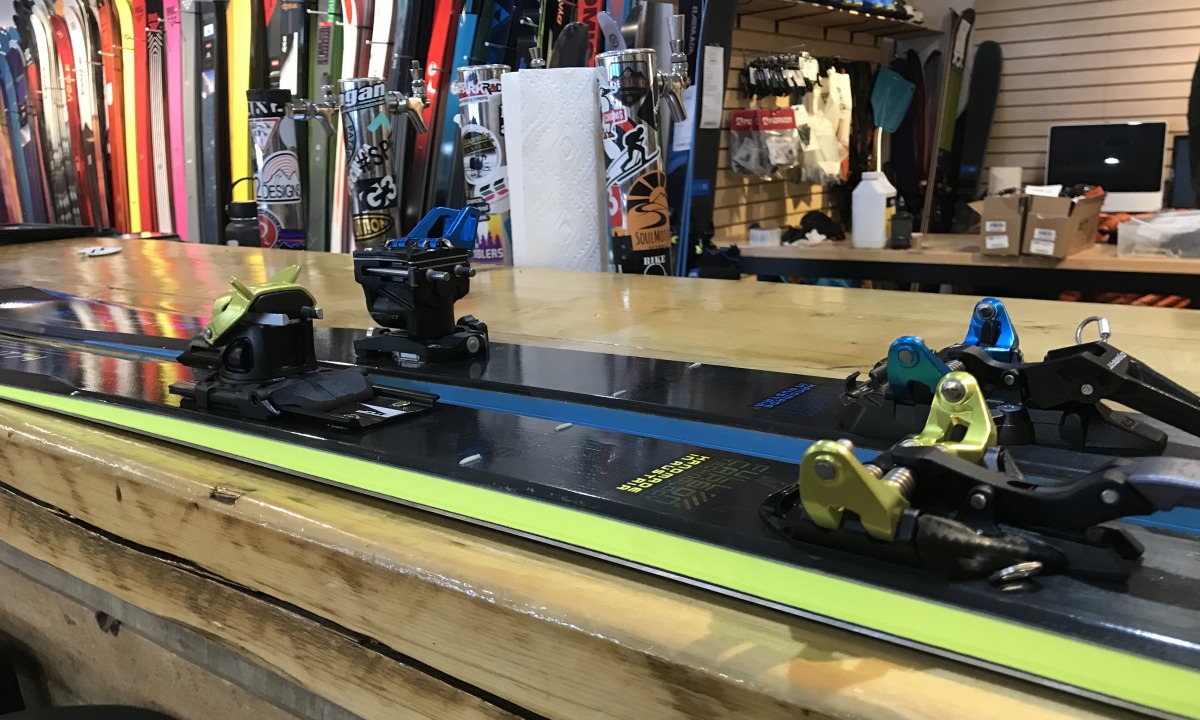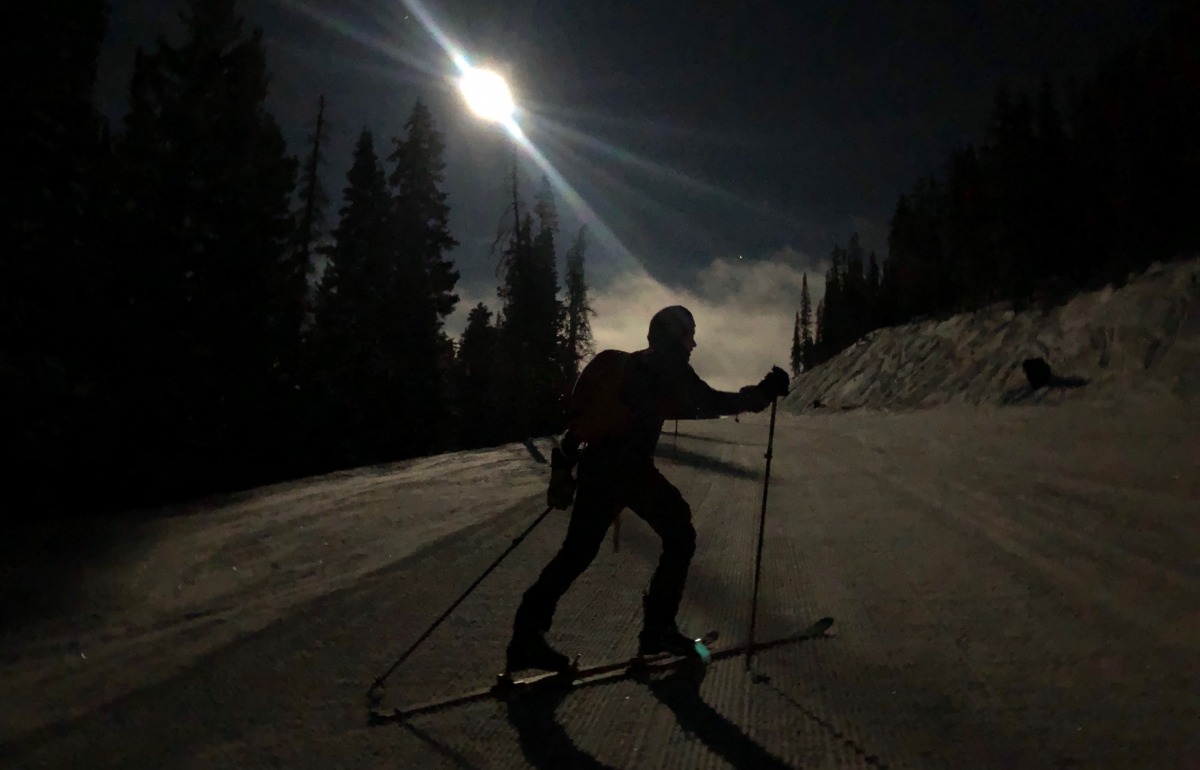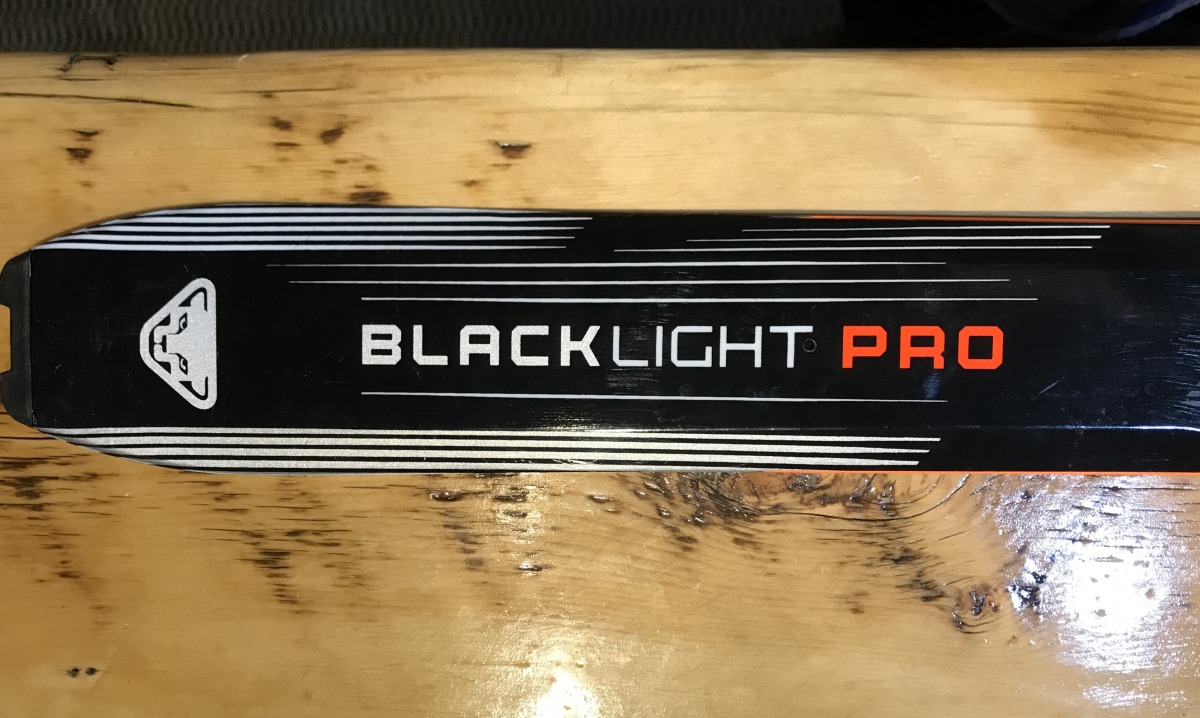It was only fitting that my first experience on Dynafit’s new Blacklight Touring Series ski was at night and under a full moon. The skis, aptly named for their primary mission of taking on big days that start during the dark hours before dawn, are Dynafit’s latest lightweight touring ski innovation, this one with the primary goal of lighter, faster, farther, and more stable. They will be available to buy online from select retailers in late January 2020, and fully on the market for winter ‘20-’21. Doug and I were able to take a few pairs out for a spin last weekend. Here are our initial thoughts.
If you were a fan of Dynafit’s Tour, SpeedFit, or Carbonio series, prepare to bid farewell to all. Dynafit is streamlining their ski options and replacing the above lines with the Blacklights and a yet-to-be-disclosed entry line available with pre-mounted skis/skins/bindings.
As for the Blacklight, it steps in to fill the SpeedFit and Carbonio slots, utilizing a sidewall cap construction, full carbon, paulownia core and a race finish. This construction results in, as Doug remarked after our full moon endeavor, a light stick that skis like a race ski but with more substance, that is: stiff and reactive, but also stable. Dynafit calls it a “high-end speed touring ski below 1,000 grams for personal bests in high alpine terrain.”
“High alpine’ terrain” means really high alpine. They’re shooting for the stars with this line — or at least the world’s tallest peaks — with the Pro version. According to the website, ski mountaineer Benedikt Böhm used the Blacklight Pro to set a new speed record on Daulaghiri VII (7,246 meters) in the Himalaya. He made a 7 hour, 53 minute summit push from basecamp and attributes his success to the lightweight performance of the ski. More details on the Pro below. First, a look at the others.
Extreme ski mountaineering was not on the menu for our full moon test, but damn if the skis weren’t fun for what we did ask of them. Doug and I skinned up Beaver Creek ski area and chose a slightly more adventurous descent route — that is, neither of us knew exactly where we were going. On our unintended route, we tried the skis in five inches of feathery pow on crust, dense trees, and soft bumps with an icy finish. True to form, the 74mm underfoot skis felt similarly stiff and springy to the 65mm underfoot race sticks I spend much of my training days on, but I found myself confidently opening them up more than I do on the race skis, despite the 172 length (long for me, as I’m typically in the 165cm range and less for skinny skis).
The Backlights are available in 74mm, 80mm and 88mm widths, along with a variety of lengths ranging 158cm – 178cm. Weights start at 930 grams for the Backlight 74 in 158 length, and go up to 1210 grams for the 178cm 88s. (For a detailed spec chart, see Dynafit’s site.) Sure, there are some lighter skis out there (Atomic Backland 85, which sidenote, will be discontinued in the U.S. next season) but one could argue merits of stability that these new Dynafit skis offer. The caveat there is could, we’ve got some thorough testing to do before we can say for sure.
For winter 20/21, Dynafit is also offering the Backlight Pro which utilizes Dynafit’s DNA race ski carbon and Paulownia core, along with full carbon construction. The Pro will only be offered 80mm underfoot, in 158cm, 164cm, 172cm, 178cm and is lighter, with weights ranging from 870 grams for the 158 to 1020 grams for the 178.

The PinSkin System will allow skiers to use eliminate tail clips by using a race skin with a pin that gets inserted in this hole. We didn’t get to test out the system, yet.
Doug took the Blacklight Pros for a spin. Here’s his take:
I have been on and off of Dynafit skis for over a decade. Starting with the Manaslu and upgrading to the Cho Oyu, I loved Dynafit skis for how they handled on corn snow and soft snow despite that they lacked the typical North American girth. Above all, they were light on the uphill and that was enough for me. Although I only have a limited time on the new skis, I put them through their paces. The above description held true of being both lightweight and easy to handle in good conditions, but I was pleasantly surprised by how these skis could actually lay an edge and carve even on the cold and dark snow where they had their maiden voyage. I skied them in everything from deep tight powder trees to hard packed snow with sporadic clumps of chunky skier debris. The Blacklight Pro was notably snappy with great energy loading into each turn.
When I hit completely scraped-off patches of as-close-to-ice as a North East transplant to Colorado could find, I did feel the skis reach their upper limit. I backed off laying them completely over on the hardest snow for fear of washing out on my brakeless and leash-less setup. A better skier might have committed to pushing them all the way over. In spite of this one short coming, the Blacklight Pro will heavily be considered while replacing my ski mountaineering and speed touring skis which was once reserved for stiffer carving ski companies.
Stay tuned for a full review soon.
Manasseh Franklin is a writer, editor and big fan of walking uphill. She has an MFA in creative nonfiction and environment and natural resources from the University of Wyoming and especially enjoys writing about glaciers. Find her other work in Alpinist, Adventure Journal, Rock and Ice, Aspen Sojourner, AFAR, Trail Runner and Western Confluence.




